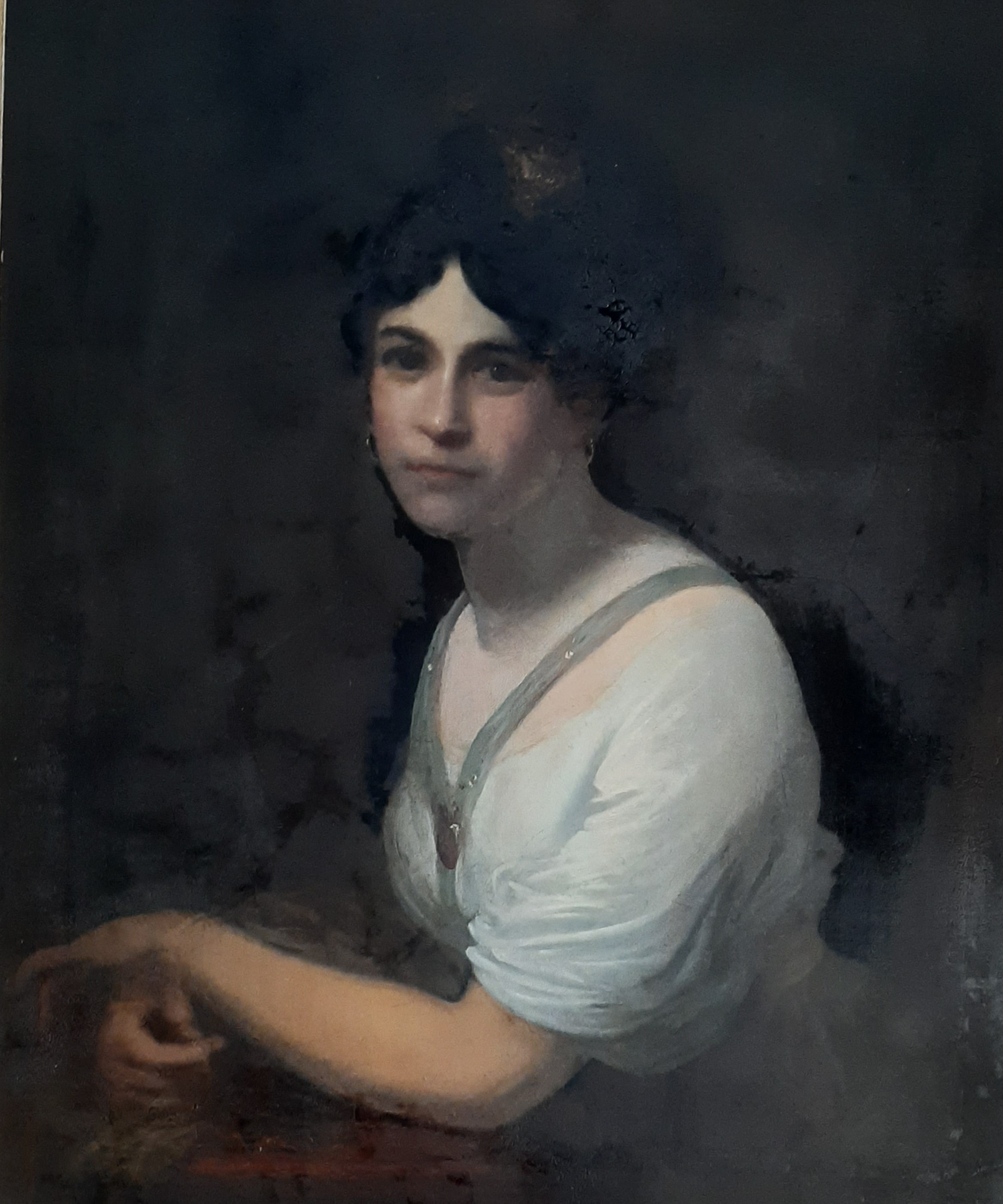Lucy Copland, née Giffard
Lucy’s Mother, also Lucy, with her harp in the Classical setting of Gunnersbury Park
Lucy was born in December 1777, the only daughter of William Giffard, a lawyer of St Paul’s, Covent Garden, and later of Turnham Green, Chiswick and Lucy Dornbush. Her only brother Francis was four years her senior. Her grandfather, also William, had been Lord of the Manor and Patron of the living of Rushall, Wiltshire, which he sold in 1749/50 before moving to nearby Charlton. Her brother Francis was to marry his cousin Charlotte, daughter and co-heir of Francis Giffard of Upavon, where he moved upon marriage, and Lucy had numerous cousins in this area of Wiltshire, not far from Marlborough where they were to meet up on 21st June 1819, their first night out from Gunnersbury on their epic journey.
The Giffards are descended from Osbern Giffard, third son of Osbern de Bolebec, who accompanied William the Conqueror at the Battle of Hastings in 1066 and the Doomsday Book records that he received land in the counties of Gloucester, Wiltshire, Somerset, Dorset, Oxford and Berkshire.
Lucy painted shortly after her marriage to Alexander Copland on 30th April 1796
On 30th April 1796 Lucy married Alexander Copland, an ambitious and energetic young builder, and their first son, Alexander was born in the next March. William followed in August 1798, with Francis in April 1801. Their only daughter, Lucy, was born on 16 March 1803. Another son, Giffard, was to be born on 5th August 1806 but he failed to survive and died in less than three weeks.
Alexander had purchased the largest share of Princess Amelia’s Gunnersbury Estate in 1801 and rapidly built their house, Gunnersbury Park, where Lucy was born. In 1810 he also acquired a thousand acre estate at Langham, Norfolk, where they would also spend time. Preferring London social life, we know she entertained extensively and lavishly at Gunnersbury and became an active member of Ealing society. We can glean a little of her social life from the diaries of John Quincy Adams, later to be America’s 6th President, who lived close to Gunnersbury during his tenure as America’s representative in Britain. His diaries of 1815-17 mention that Lucy was accustomed to sing and play the piano and harp at social gatherings. This she shared with Adams’s wife Louisa, an accomplished musician whose portrait, like Lucy’s, is painted alongside a harp. Little Ealing History Group’s wonderful publication, An American President in Ealing - The John Quincy Adams Diaries 1815 - 1817, is filled with insights as the Group explore the life of Adams and his family and the community in which they lived during their time in Britain.
When her husband Alexander died in July 1834 his Will provided handsomely for her, with three-tenths of his estate and an income of £2,500 a year (£217,250 today) for the rest of her life, which was to come to an end on 24 October 1849.

